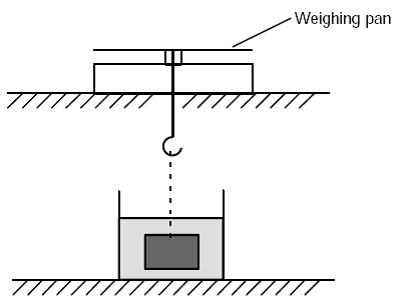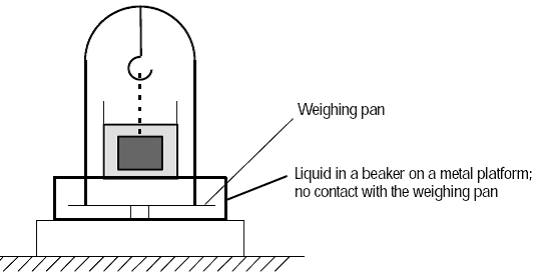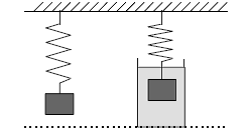What you need to know about density determination based on Archimedes' principle.
The video of the buoyancy method test process is as follows:

What is the buoyancy method?
The buoyancy method is often used to determine the density of bodies and liquids.
The apparent weight of a body in a liquid, the weight as reduced by the buoyancy force is measured.
This value is used in combination with the weight in air to calculate the density.

Figure 1: Basic procedure for the buoyancy method with below-balance weighing.

Figure 2: Basic procedure for the buoyancy method with a frame for hanging the plummet and a bridge for holding the container for liquid.
In the procedures illustrated in Figure 1 and Figure 2, the values displayed on the weight readout indicate the mass of the immersed body as reduced by buoyancy (see also Figure 3).

Figure 3: The force exerted by a body on a spring scale in air (left) and in water (right)
This means that, in light of the equation
 the mass of the body weighed in air is known: ms = m(a).
the mass of the body weighed in air is known: ms = m(a).
The mass of the liquid mfl is not directly known, but is yielded by the difference between the weights of the body in air (m(a)) and in liquid (m(fl)):
mfl = m(a)- m(fl)
This changes Equation 1 for determining the density of the body into:
 Equation 1
Equation 1
To determine the density of a liquid, mfl is again calculated from the values measured for mass of the body in air and in liquid mfl = m(a) - m(fl) and the result used in Equation3.
The buoyancy method maintains the relationship for determination of the density of the liquid:
 Equation 2
Equation 2
 E quation3.
E quation3.
Vs is the known volume of the plummet used to determine the liquid density.
Thus the density of a substance can be determined in two weighing operations.



 留言列表
留言列表


